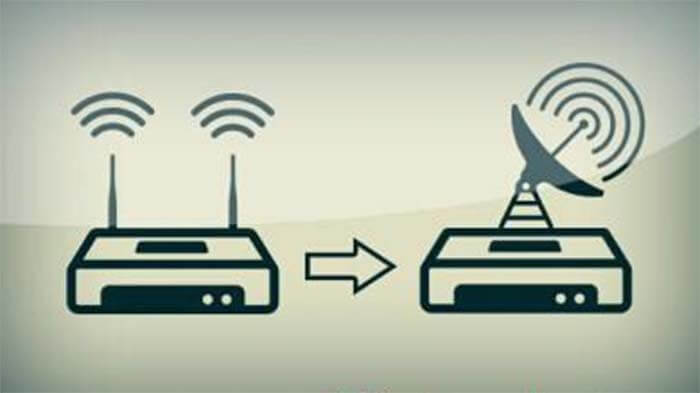Review the development history of wireless WiFi signal
The first generation of 802.11, formulated in 1997, only runs at 2.4GHz, the fastest is 2Mbit/s
The second generation of 802.11b, in 1999, only runs on 2.4GHz, the fastest is 11Mbit/s (also known as WIFi).
The third generation of 802.11g/a, in 2002, running at 2.4GHz and 5GHz respectively, the fastest 54Mbit/s
The fourth generation of 802.11n, in 2007, can run at 2.4GHz or 5GHz, starting from 150Mbit/s, the fastest is 300Mbit/s or even 450Mbit/s
The fifth-generation 802.11ac, in 2012, only runs at 5GHz and can provide at least 1Gbps bandwidth for multi-station wireless LAN communication.
The difference between 2.4GHz and 5.8GHz Wireless WiFi Signal
Wireless WiFi uses these two frequency bands, 2.4GHz and 5.8GHz frequency bands. The same point is that they are allocated to wireless WiFi as frequency bands, and they are all civilian frequency bands, so there is no need to apply for filing with the Commission.
The 2.4GHz and 5.8GHz specific differences are as follows
2.4GHz frequency band range: 2412~2472MHz approximately 60MHz, 5.8GHz frequency band range: 5725~5850 MHz approximately 125MHz
The 2.4G band wireless WiFi signal is what we usually mean by wireless WiFi, which can be directly connected to our computer or mobile phone to surf the Internet.
5.8GHz is also considered a WiFi signal, but our computers and mobile phones generally use 2.4GHz WiFi, so 5.8GHz is marginalized.
The latest 802.11ac standard only has a 5GHz frequency band, mainly because the 2.4GHz frequency band is too crowded.
The number of mobile phones supporting 5.8GHz wireless WiFi is gradually increasing, which is called dual-band because 2.4GHz support is necessary.
The difference between 2.4GHz and 5.8GHz wireless Wifi signal transmission characteristics
Compared with 2.4GHz, the signal of 5.8GHz does not receive as much interference in the same frequency band, but the penetration ability is not as strong as 2.4GHz, and it is easily absorbed by metals or other obstacles.
2.4GHz wireless WiFi has a better diffraction ability than 5.8GHz. For example, if you install a WIFI device at home, you can receive your signal next door or a little farther away.
As the 2.4GHz frequency band is used by WIFI, microwave ovens, and Bluetooth, many home wireless routers use this frequency band, so 2.4GHz can easily cause channel interference problems.
5.8GHz frequency bands are relatively wide, and the corresponding equipment is relatively small, so the 5.8GHz frequency band is not easy to cause interference. (There will be interference, but relatively less)
5.8G equipment has a longer transmission distance than 2.4GHz equipment, the rain attenuation is smaller and the stability is better.
About the latest 802.11ac 5GHz Wireless WiFi Signal
In 2014, high-end flagship mobile phones such as the Apple iphone6 began to be equipped with 802.11ac WiFi module as standard
In 2016, thousand-yuan mobile phones began to be equipped with 802.11ac wireless WiFi modules as standard
Wireless routers that support 802.11ac Gigabit 5GHz are more expensive.
China 5.725~5.825GHz: 4 channels, mobile phones bought in Japan can’t be used with 5G routers in China (5.15~5.25GHz in Japan: 4 channels)
The 5GHz attenuation is too severe, and there is no signal after 1 to 2 walls. 2.4GHz can pass through 3 to 5 walls.
802.11ac Gigabit wireless WiFi has little meaning for Internet access, and home broadband is still at the level of 10M.
Support 802.11ac Gigabit wireless WiFi, and will support 2.4GHz and 5GHz wireless wifi signal at the same time.
You may also be interested in the below articles.
Internal Antenna VS. External Antenna
LTE Vs. 5G: Is 5G Better Than LTE?




